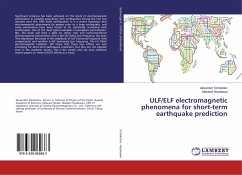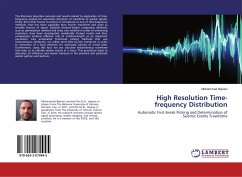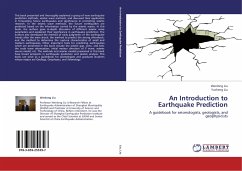
ULF/ELF electromagnetic phenomena for short-term earthquake prediction
Versandfertig in 6-10 Tagen
22,99 €
inkl. MwSt.

PAYBACK Punkte
11 °P sammeln!
Significant progress has been achieved on the study of electromagnetic phenomena in possible association with earthquakes during the last two decades since the 1995 Kobe earthquakes. It is a recent consensus that electromagnetic phenomena do appear prior to a large earthquake, and some phenomena have been found to be statistically correlated with earthquakes. One of the most typical examples is ionospheric perturbation. But, this book will shed a light on rather new and nonconventional electromagnetic phenomena: One is the ULF (Ultra low frequency, less than 1Hz) depression (decrease in the am...
Significant progress has been achieved on the study of electromagnetic phenomena in possible association with earthquakes during the last two decades since the 1995 Kobe earthquakes. It is a recent consensus that electromagnetic phenomena do appear prior to a large earthquake, and some phenomena have been found to be statistically correlated with earthquakes. One of the most typical examples is ionospheric perturbation. But, this book will shed a light on rather new and nonconventional electromagnetic phenomena: One is the ULF (Ultra low frequency, less than 1Hz) depression (decrease in the amplitude of ULF horizontal magnetic field components) and another is ELF (extremely low frequency, 1Hzf10Hz) electromagnetic radiation. We know that these two effects are very promising for short-term earthquake prediction, but they are not popular even in the academic society. This is the reason why we have collected several papers on these ULF/ELF effects as a book.












